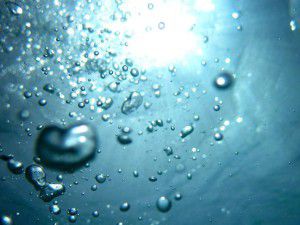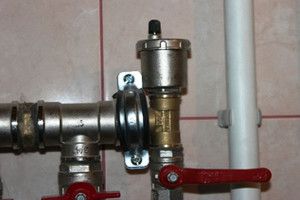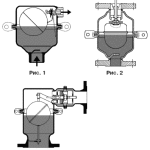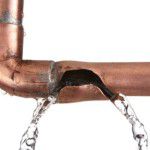Water pipes are designed to transport water, so there is no place for air. However, air enters the pipes. Why is this happening and what is the danger of the air in the water supply systems of private houses? Can it be prevented from entering and how can air be removed from the water supply system?
Why is the air in the water supply dangerous?
water hammer effect Air bubbles crush the water flow, causing inconvenience to the consumer. Cranes constantly "spit", behave unpredictably;
- Air locks accumulate in the same places, causing rapid destruction of pipes and adapters. There is a danger of turns and bends of pipes, where there is an opportunity for an air bubble to linger;
- Air in water supply pipes can provoke a water hammer. The unpleasant phenomenon gradually destroys the pipes, causing longitudinal cracks. Over time, the pipe bursts in the damaged area. For a long time, the owner may not notice the destruction, this is the main danger of water hammer.
Why does air appear in the water supply system

There are two reasons for the appearance of air in the water supply system of the house:
- Outside... Air enters the pipes through leaking joints;
- From within... Approximately 30 grams of air per 1 ton of water is dissolved in the stream of water passing through the pipes. Gradually the air is released. The slower the water flows, and the hotter it is, the faster the process goes. That is, in hot water systems, the likelihood of air jams is higher.
In the water supply systems of private houses, air appears for the following reasons:
- when the water level drops, air can be sucked in through the check valve;
- poorly tightened fittings with rubber seals;
- in hot water supply systems, the cavitation process is observed: steam is formed, air bubbles collect in the water, forming voids or caverns;
- the air in the water supply pipes remained from the first start-up of the equipment.
Air bubbles contain 30% more oxygen than atmospheric air. This explains the high oxidizing capacity of air in hot water supply systems. Air bubbles can be of various shapes: spherical - small, no more than 1 millimeter in diameter, mushroom-shaped, oval.
In vertical pipes, bubbles rush upward or are distributed throughout the volume. In horizontal highways, they stop at the highest points where they carry out destructive work.
When the water velocity in the pipes is more than 0.5 meters per second, the bubbles move without lingering. When the speed exceeds 1 meter per second, the bubbles break into very small bubbles. It turns out a semblance of an emulsion of water and air. Air bubbles in the water supply system of a private house begin to collapse at a fluid speed of 0.25 meters per second. If it is lower, traffic jams can stagnate in some places for a long time.
How to get rid of air in pipes

If there is already air in the water supply system of a private house, but it is not equipped with bleed devices, it is necessary:
- Switch off the pumping station.
- Open all drain taps, drain water and air from the water supply system. Then the pipes are filled again.
You can remove air from the water supply system once and for all with the help of bleed or bleed devices:
- mechanical valves such as the Mayevsky valve;
- automatic air vents;
- ball valves;
- valves.
Mechanical air relief valve device from the water supply system is as follows: a cylindrical box, the top is closed with a lid, from the bottom there is a thread for connecting to the water supply. There is a threaded plug in the middle of the cover. A plastic ball-shaped float is suspended inside the cylinder. If there is no air in the hot water supply system, the ball rises to the hole in the plug and closes it tightly under the pressure of the network. As soon as air enters the device, the ball leaves and the air is discharged. Air can enter the system through the bleed valves, which is useful when repairing or inspecting networks and accelerates the drainage of water.
Air purging devices are installed at specific points in the water supply system: at the topmost extremities, at bends or bends. That is, where the likelihood of air accumulation is increased.
Homemade air accumulator
In rural water supply systems, air often flows interspersed with water. It is difficult and inconvenient to use such a water supply system, and automation does not always cope: if there is a lot of air, water overflows with a fountain directly from the valve. Therefore, instead of an automatic bleed device to release air in the water supply system, they install air accumulator... You can do it yourself, this is a tank with a drain pipe and a tap. The diameter of the accumulator must be 5 times the diameter of the water pipe, then it can work effectively.
The air accumulator is installed at the highest point of the water supply system where it is convenient to manually bleed the air. Air storage tanks are widely used in multi-storey buildings in hot water systems.
Automatic air vents

Devices for removing air from plumbing systems are widely available on the market. Float valves are continuous air vents... They protect the operating system from the accumulation of air and gases. When the pressure in the system drops to atmospheric pressure, the float valve lets air into the pipes. To eliminate the cause of the appearance of air in the water supply system of the house, a check valve is additionally installed. There are air vent models already equipped with a check valve.
Air vents starting action used to vent air when filling the system with water or to start air during drainage work.
Combined air vents possess the properties of both previously described devices.
When choosing an air vent, the volume of air discharged is taken into account. This indicator can be found in the characteristics of the device. You should not choose a more powerful automatic air vent. Working half-heartedly, it will wear out faster.
For the correct operation of the air vent, the working pressure in the water supply and the quality of the liquid are important. If the density of the resource is below 960 kilograms per cubic meter, floats of a special design are installed.
Video clip about the simplest air vent - the Mayevsky valve:










Hello. 1 battery in the apartment stopped heating. I realized that I had to bleed the air, but I can't figure out how. there are no taps, only some kind of plug in the corner of the battery. How to be?
Hello.
Apparently, this "plug" is the valve. But it should have a notch for a slotted screwdriver. Unscrew slowly until air comes out. Wait for the moment when the air runs out and water flows. After that, screw the valve back so that it does not let water / air pass through.
Hello, under the overhaul program, hot water pipes are being changed in our house. Do I live on the top floor? and we are going to install a valve to bleed air from the system.Can I refuse to install it? We have 2 apartments on the riser, and if it is installed by the neighbors, is it necessary to install it with me?
Definitely, Elena. It's in your best interest. Otherwise, you will live in the hall.